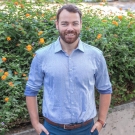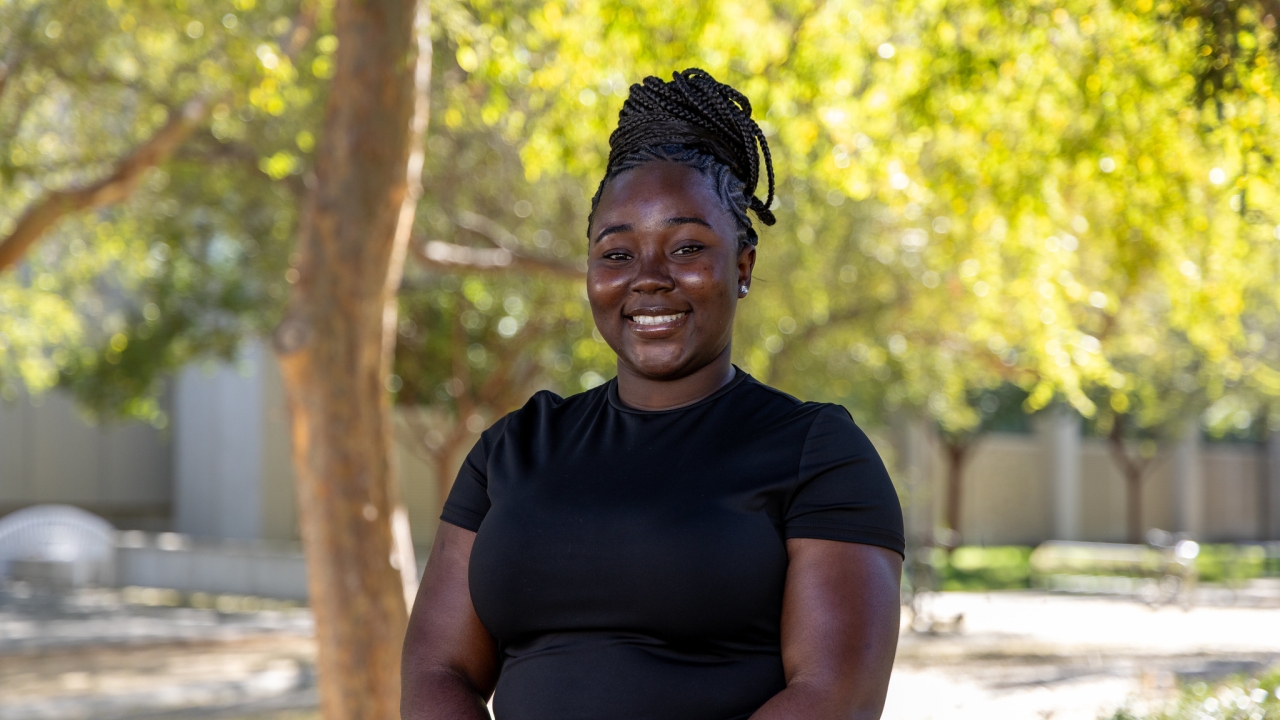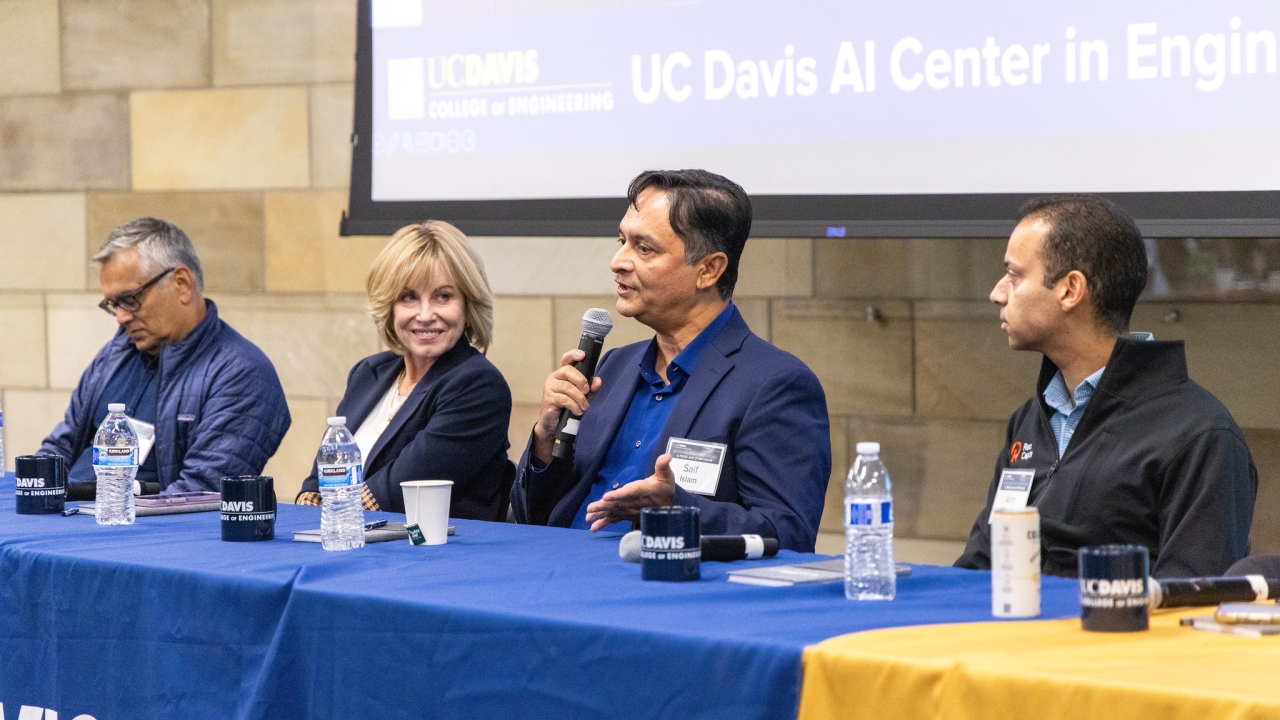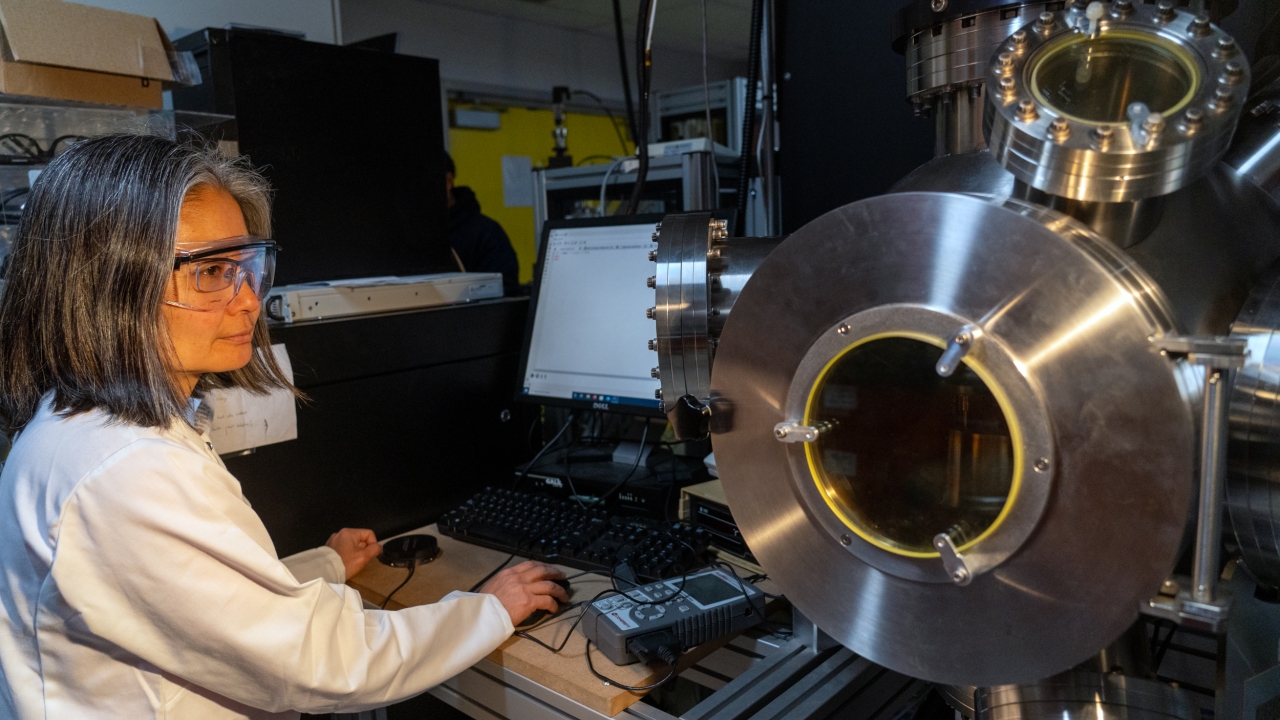
Rooted in Community, Reaching for Discovery
When Nicole O’Shea came to the University of California, Davis, she was embarking on a new path away from her background in English and toward engineering. Not knowing exactly where her journey would take her, she has put down roots in the materials science field and grown a passion for inspiring and informing the next generation of materials researchers.
Now, at the halfway point of her Ph.D. program in materials science and engineering, O’Shea has grown from those roots and begun to branch out: As the recipient of a UC-National Lab In-Residence Graduate Fellowship, she is expanding her research on ternary metal alloys at Lawrence Livermore National Laboratory, or LLNL. And in her community, O’Shea continuously finds ways to connect and help others find their way to materials science.
As her branches continue to expand, O’Shea hopes to pursue her own discoveries and educate new audiences about everything still waiting to be uncovered.
“I want to stand at the precipice of knowledge, to gaze out into the unknown, and to share what I discover,” she said.
Branching Out to Materials Science
After graduating with a Bachelor of Science degree in English with an emphasis in professional writing from the University of Wisconsin-River Falls, O’Shea got a job with Meditech in Minnesota as a software tester. She quickly moved up to the role of software designer, acting as the go-between of the medical personnel and the software developers, when she had an epiphany about her career trajectory.

“I've always been interested in math and science. I didn't take to engineering early on, so I think that steered me away from STEM for a while,” said O’Shea. “Then, as I was in my career and working alongside doctors and programmers, it became obvious to me that I was more interested in the work itself than writing about it.”
While she enjoyed her time with Meditech, O’Shea decided it was time for a change and began looking for a place where she could explore her STEM curiosity while enjoying a small-town community, akin to where she grew up in Wisconsin. UC Davis seemed to tick all the boxes.
“When I looked at Davis, it felt like home to me,” said O’Shea. “I'm from the Midwest, and I went to a similar but much smaller university for my undergrad. I like the sprawling campus and the green spaces and the sense of community.”
After taking a few exploratory classes at Laney College in Oakland (her partner was developing a business in Berkeley at the time), it was the introduction to materials science class that had O’Shea on the edge of her seat, piquing her curiosity. With her multifaceted background, she found that materials science combined many of the things she enjoyed most, like math, physics and art.
Changing Temperature, Changing Elements
At UC Davis, O’Shea was drawn to Assistant Professor of Materials Science and Engineering Scott McCormack’s lab group because of its focus on materials in extreme environments and trying to find new metals that can operate safely in those environments (think: power plants or engines).
“The lab itself focuses on very fundamental science questions. We're investigating the beginning of new materials,” said O’Shea. “What can we mix together? Can we find a new metal that's really good for structures? When does it melt? When does it change shape? Those kinds of things are what we want to answer.”
O’Shea’s research focuses on a ternary metal alloy system of high-temperature metals, which is a range of alloys composed of different proportions of three different metallic elements that have ultra-high melting points. She looks at niobium, tantalum and zirconium, specifically at their phase stability at high temperatures for possible application in aerospace, space travel and nuclear energy.
During her fellowship at LLNL, O’Shea will create ternary metal alloy samples — tiny metal beads — with different ratios of the three metals to inspect how the melting temperature changes. The samples are made using the laboratory’s plasma arc melter, which creates a high-temperature plasma arc by passing current through argon, a non-conducting gas, and ionizing it, heating the plasma and transferring the thermal energy to the sample material. O’Shea will also use LLNL's computational tools for data analysis.


O’Shea will bring the samples back to UC Davis to use the unique conical nozzle levitation, or CNL, system to expose the samples to extremely high temperatures. The CNL uses gas to levitate the metal bead (keeping the bead away from a containment structure, which could absorb heat) and dual-wavelength lasers that heat the sample to ultra-high temperatures.
“Different materials form into different crystal structures, and the amount of each metal will affect that. So, mapping out what percentages cause it to change and how the transition temperature changes with the change in the composition is important,” said O’Shea. “What I'll be doing is mapping out the entire ternary phase diagram for the system, and then if that goes well, expanding to higher order systems.”
Elemental (and Human) Bonds
While studying and potentially developing new metals, throughout her time at UC Davis, O’Shea has also built roots in the community she was searching for in different ways on campus and in her materials science community.
Her lab, for instance, has become a pseudo family for O’Shea. She feels supported by her fellow lab mates and has helped her peers with their research and in preparing new equipment for use.

“Whenever somebody needs a pair of hands, there's always somebody around to jump in and help out,” said O’Shea. “It feels very much like what I'm used to in a family environment at home, where you're tinkering around in the garage or whatever, and you might be working on different projects, but if you need help, your brother comes over and gives you a hand.”
She has further embedded herself in the materials science community as a member of the American Ceramic Society President’s Council of Student Advisors. She has also joined the UC Davis Bladesmithing Team where she has connected with people like her who enjoy working with metals.
“I'm the only one in my [research] group studying metals, and now picking up bladesmithing is almost cliche, but in a cool way. It just fits right in my niche.”
One of her largest sources of community is the UC Davis Chemical Engineering and Materials Science and Engineering Graduate Student Organization, for which she has served as the communications director and research symposium chair in 2022, planning the inaugural Chemical Engineering and Materials Science and Engineering Research Symposium with co-chair Joaquin Santiana.
This year's symposium, for which O’Shea is on the planning committee, will take place on Sept. 23, 2025, and highlight the diverse spectrum of research occurring across both departments, presented by undergraduate and graduate students.
In addition to jumping in and helping when and where she can with events like practice preliminary exams, “Undergrads Ask the Grads” panels and holiday parties, O’Shea has often hosted both official (like the Taste of Home Potluck) and unofficial events (like board game nights) at her home in Davis.
“Participating in the Graduate Student Organization has been really rewarding, because it's an opportunity to both interact with all the other graduate students whom I might not see as much because they get busy with research and also give back to the community.”





